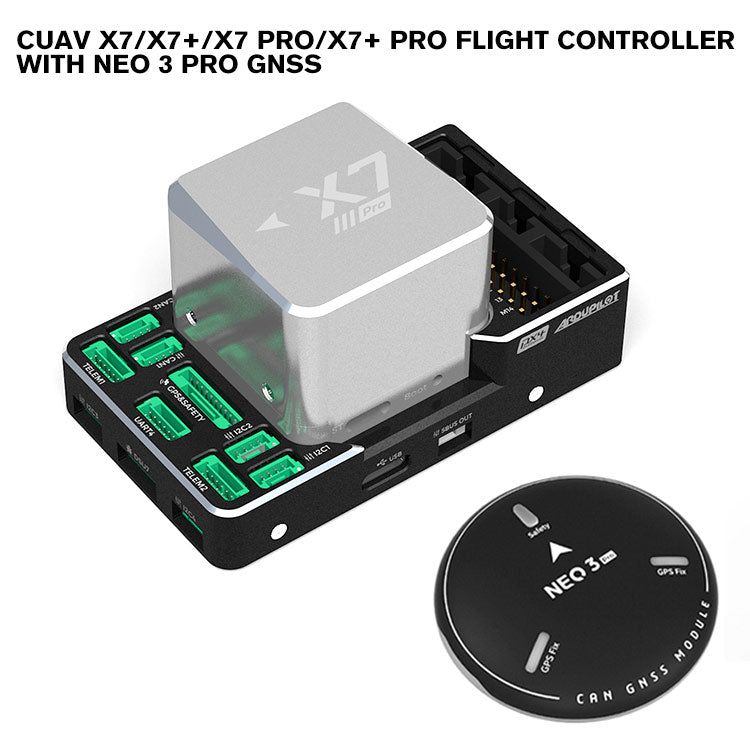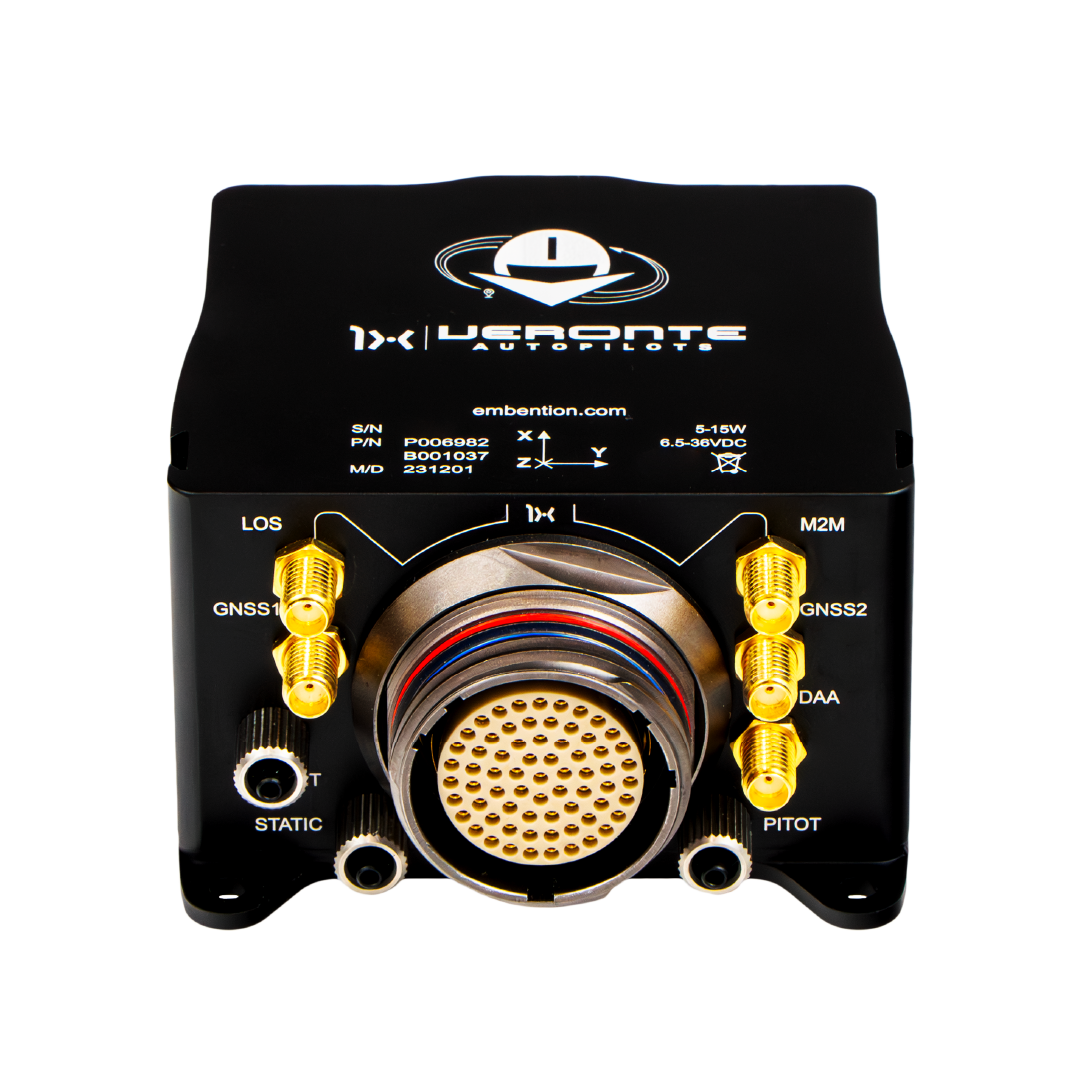SparkNavi Drone Flight Controller and GNSS/INS Made in Taiwan: Cutting-Edge Solutions for UAVs
SparkNavi Drone Flight Controller and GNSS/INS Made in Taiwan: Cutting-Edge Solutions for UAVs
Blog Article
Comprehending the Vital Attributes and Functions of a Drone Flight Controller for Optimum Airborne Efficiency
The flight controller functions as the essential part in a drone's design, orchestrating its activities and guaranteeing stability through a sophisticated interaction of sensing units and information handling. Recognizing the important features and features of these controllers is vital for making the most of aerial performance, as they dictate not only navigational precision yet likewise overall safety and security and reliability. With developments in technology, the landscape of flight controllers is rapidly evolving, triggering a better examination of what genuinely defines ideal functionality in this important system. What effects do these growths hold for both lovers and professionals in the area?
Introduction of Flight Controllers
When exploring the globe of drone innovation, recognizing trip controllers is necessary for both professionals and enthusiasts alike. Trip controllers work as the mind of the drone, coordinating its movements and making sure security during flight (SparkNavi drone flight controller and GNSS/INS made in taiwan). They refine information from different sensing units, including barometers, gyroscopes, and accelerometers, to maintain equilibrium and reply to pilot inputs efficiently
The style of trip controllers can differ significantly, ranging from basic variations developed for entry-level drones to sophisticated systems furnished with sophisticated attributes for expert applications. The integration of GPS capabilities allows precise navigation and positioning, while programmable firmware enables users to tailor flight attributes to match their particular needs.
Additionally, flight controllers are essential in helping with interaction between the drone and the remote control, enabling real-time adjustments and telemetry information transmission. Recognizing the various kinds of flight controllers, including multi-rotor, fixed-wing, and crossbreed systems, is important for choosing the appropriate model for an offered application. Ultimately, a comprehensive grasp of trip controllers not only enhances the flying experience but additionally takes full advantage of the efficiency and security of drone operations.
Key Functions of Flight Controllers
Flight controllers play a pivotal role in managing a drone's trip dynamics by carrying out a number of vital features that ensure stability and responsiveness. One of the main functions is the stablizing of the drone's positioning and altitude. This is achieved through the integration of different sensing units, consisting of gyroscopes, measures, and accelerometers, which continuously keep track of the drone's position and motion.
.png)
One more important feature is the processing of control inputs from the pilot or independent systems. The flight controller analyzes these inputs and changes the drone's electric motor speeds appropriately to accomplish the preferred flight path. This includes handling yaw, roll, and pitch, which are crucial for maneuverability.
Furthermore, flight controllers are equipped with secure devices. These features are made to reply to vital circumstances, such as reduced battery degrees or loss of signal, by launching predefined actions like going back to the launch point or floating in position.

Important Features to Consider
Various crucial features must be considered when picking a drone trip controller to make sure optimal performance and integrity. One essential aspect is the controller's processing power, which determines its capability to handle complex flight algorithms and real-time information handling. A higher handling capability improves responsiveness and security throughout flight.
One more important function is the variety of supported flight modes. A flexible flight controller should use various settings, consisting of acro, elevation hold, and GPS-assisted settings, satisfying various pilot ability degrees and functional scenarios. In addition, the existence of integrated safety functions, such as fail-safes and geofencing, can substantially improve functional security.
Compatibility with different interaction procedures is check my site also crucial, as it makes certain seamless combination with other tools and peripherals, such as remote controllers and telemetry systems. The controller's firmware have to be easy to use and on a regular basis updated to include brand-new functions and optimizations.
Integration With Sensing Units and Systems
A flight controller's performance is heavily influenced by its capability to integrate with various sensing units and systems. This combination is crucial as it makes it possible for the trip controller to obtain real-time data essential for reliable trip management. Trick sensing units consist of GPS, inertial measurement systems (IMUs), measures, and magnetometers, each offering vital info concerning the drone's orientation, altitude, and placement.

Additionally, progressed trip controllers sustain home combination with payload systems, including electronic cameras and other sensing units, enabling enhanced functionalities such as self-governing navigation and challenge evasion. This interconnectedness not just boosts the drone's functional abilities yet additionally broadens its application possible throughout various industries, from aerial photography to farming tracking. Therefore, a well-integrated flight controller is fundamental for attaining optimum aerial efficiency and making sure the integrity of drone operations.
Tips for Optimizing Performance
To optimize the efficiency of your drone, numerous vital strategies can be employed that emphasis on optimizing both hardware and software application elements. Make sure that the flight controller firmware is up to day.
Following, adjust your sensors, including the accelerometer and gyroscope, to ensure exact readings. Proper calibration lessens drift and boosts flight security, especially during facility maneuvers. In addition, think about updating the hardware components, such as motors and propellers, to improve thrust and efficiency. High-quality propellers can decrease drag and boost flight time.
Furthermore, maximize your drone's weight by lessening unneeded payloads. A lighter drone not just carries out far better but additionally extends battery life. Fine-tune your trip setups, consisting of PID (Proportional, Important, Acquired) values, to accomplish responsive and smooth handling. By carrying out these methods, drone operators can substantially improve aerial efficiency, bring about an extra effective and pleasurable flying experience.
Verdict
In conclusion, an extensive understanding of drone trip controllers is imperative for enhancing airborne performance. The assimilation of vital features and crucial functions, including processing power and security systems, directly affects the security and maneuverability of drones. In addition, reliable interaction with various sensing units and systems plays a critical role in accomplishing precise navigation and operational efficiency. By prioritizing these aspects, drivers can substantially elevate the efficiency and reliability of their drone systems in diverse applications.
Trip controllers serve as the mind of the drone, orchestrating its movements and ensuring stability throughout flight.Flight controllers play an essential function in managing a drone's trip dynamics by carrying out a number of vital features that make certain security and responsiveness. The flight controller translates these inputs and readjusts the drone's motor rates accordingly to achieve useful link the wanted trip course.Numerous crucial features must be taken right into account when picking a drone trip controller to ensure optimal performance and integrity. Thus, a well-integrated flight controller is fundamental for achieving ideal airborne efficiency and ensuring the reliability of drone procedures.
Report this page